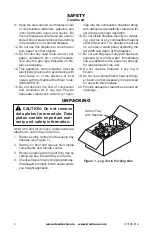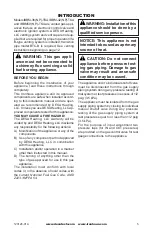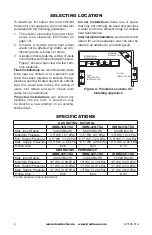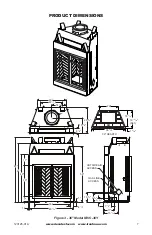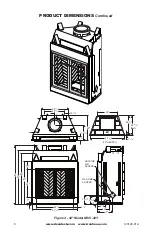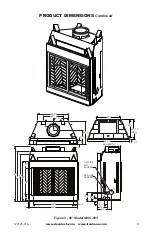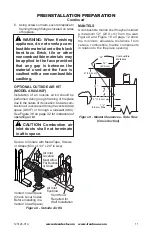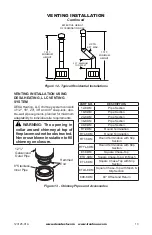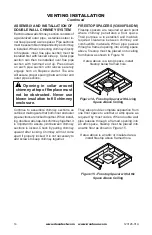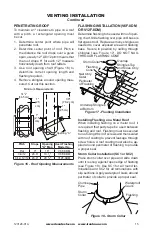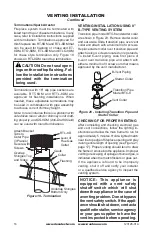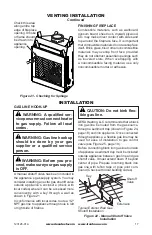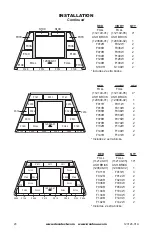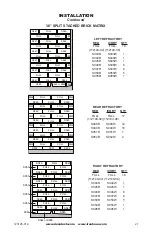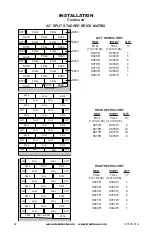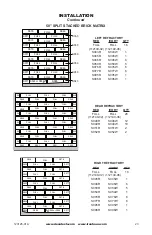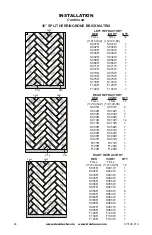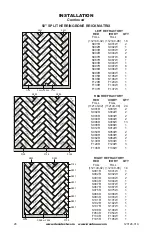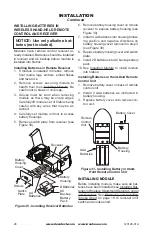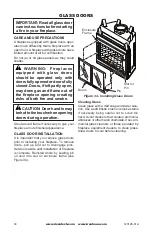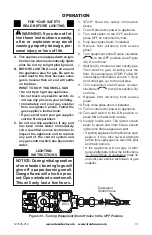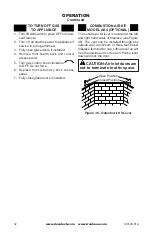
www.desatech.com www.ironhaus.com
123126-01A
17
Check this area
along entire top
edge of fireplace
opening. Smoke
or flame should
be drawn into
appliance
opening.
Figure 21 - Checking for Spillage
VEntInG InStaLLatIOn
Continued
FINISHING FIREPLACE
Combustible materials, such as wallboard,
gypsum board, sheet rock, drywall, plywood,
etc. may make direct contact with sides and
top around the fireplace face. It is important
that combustible materials do not overlap face
itself. Brick, glass, tile or other noncombustible
materials may overlap front face provided
they do not obstruct essential openings such
as louvered slots. When overlapping with
a noncombustible facing material, use only
noncombustible mortar or adhesive.
InStaLLatIOn
GAS LINE HOOK-UP
WARNING: A qualified ser
-
vice person must connect heater
to gas supply. Follow all local
codes.
WARNING: Gas line hookup
should be done by your gas
supplier or a qualified service
person.
WARNING: Before you pro-
ceed, make sure your gas supply
is OFF.
A manual shutoff valve has been included in
the appliance’s gas supply system. You may
consider installing an extra gas shutoff valve
outside appliance’s enclosure (check with
local codes) where it can be accessed more
conveniently with a key through a wall as
shown in Figure 21.
In conformance with local codes, route a 1/2"
NPT gas line to appliance through hole in left
or right side of firebox.
Figure 22 - Manual Shutoff Valve
Installation
Typical Exterior Wall Gas
Shutoff Installation
Key
Extension
Shutoff
Valve
CAUTION: Do not kink flex
-
ible gas line.
DESA Heating, LLC recommends that a black
iron gas line be routed from the gas source,
through a sediment trap (shown in Figure 24,
page 18) and into appliance. Once connected
through appliance, a flexible gas line may be
used for ease of installation to gas control
valve (see Figure 25, page 18).
Before connecting black iron gas line to inside
of appliance a sediment trap must be included
outside appliance between gas line and gas
shutoff valve. It must extend down 3" beyond
center of pipe. Prepare incoming black iron
gas line with teflon tape or pipe joint com-
pound (Check with local building codes).


